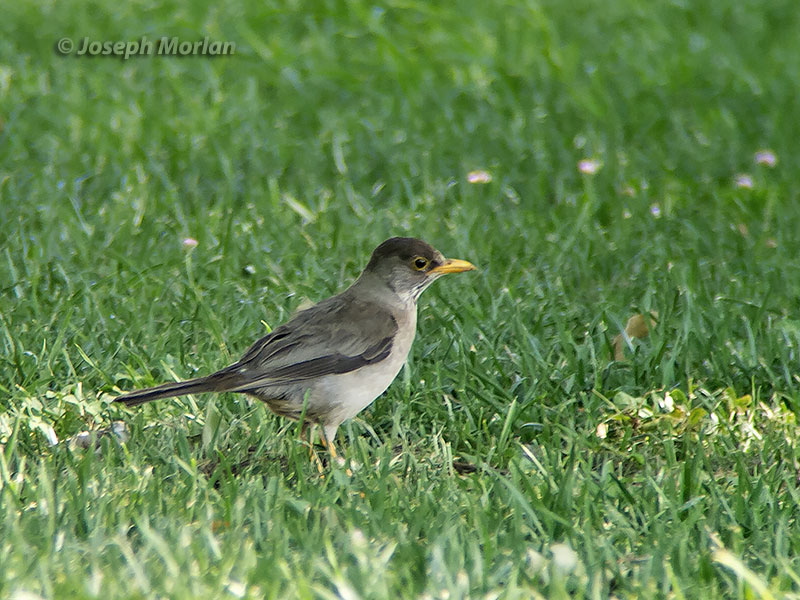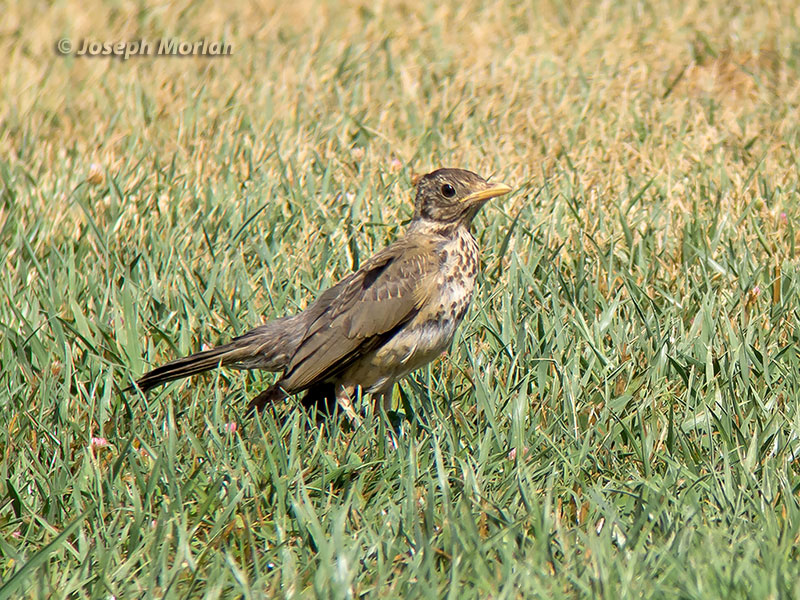

This is another common bird attracted by the lawn sprinklers across from my hotel. This is probably a male. Females are usually browner on the back and more buffy below. However there is much individual variation. Its black head, pale eyering and yellow legs help distinguish this species from the otherwise similar Creamy-bellied Thrush (T. amaurochalinus) of northern Argentina. The ranges of the two species barely overlap and they may constitute a superspecies. Both have neat rows of black streaks on a white throat. In additional to adults such as this, there were a number of recently fledged juveniles. They are much browner and heavily spotted below. A photo of one of the juveniles, a rather ragged looking individual is above.
This is the widespread T. f. magellanicus or "Magellan Thrush" of southern South America. The nominate race, confined to the Falkland Islands is larger and darker. Clements (but not HBW, IOC or Howard & Moore 4th) recognizes a third subspecies, T. f. pembertoni from central Argentina. Submersion of this race into magellanicus by most authorities apparently traces to "Birds of the High Andes" by Fjeldsa and Krabbe (1990). Clement "Thrushes" (2000) likewise rejects pembertoni, but accepts T. f. mochae confined to Mocha Island, Chile. It is said to be paler with a longer bill.
Digiscoped with Panasonic DMC-LX5 | Nikon FieldScope 3 | 30X WA | hand-held (no adapter)